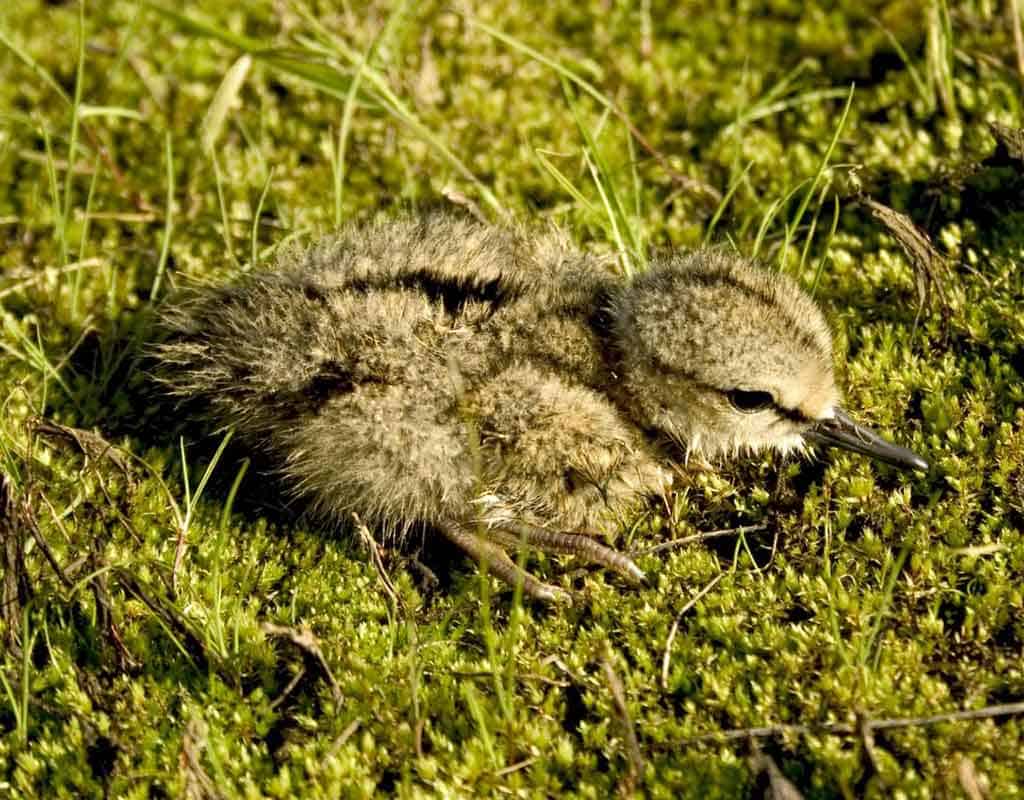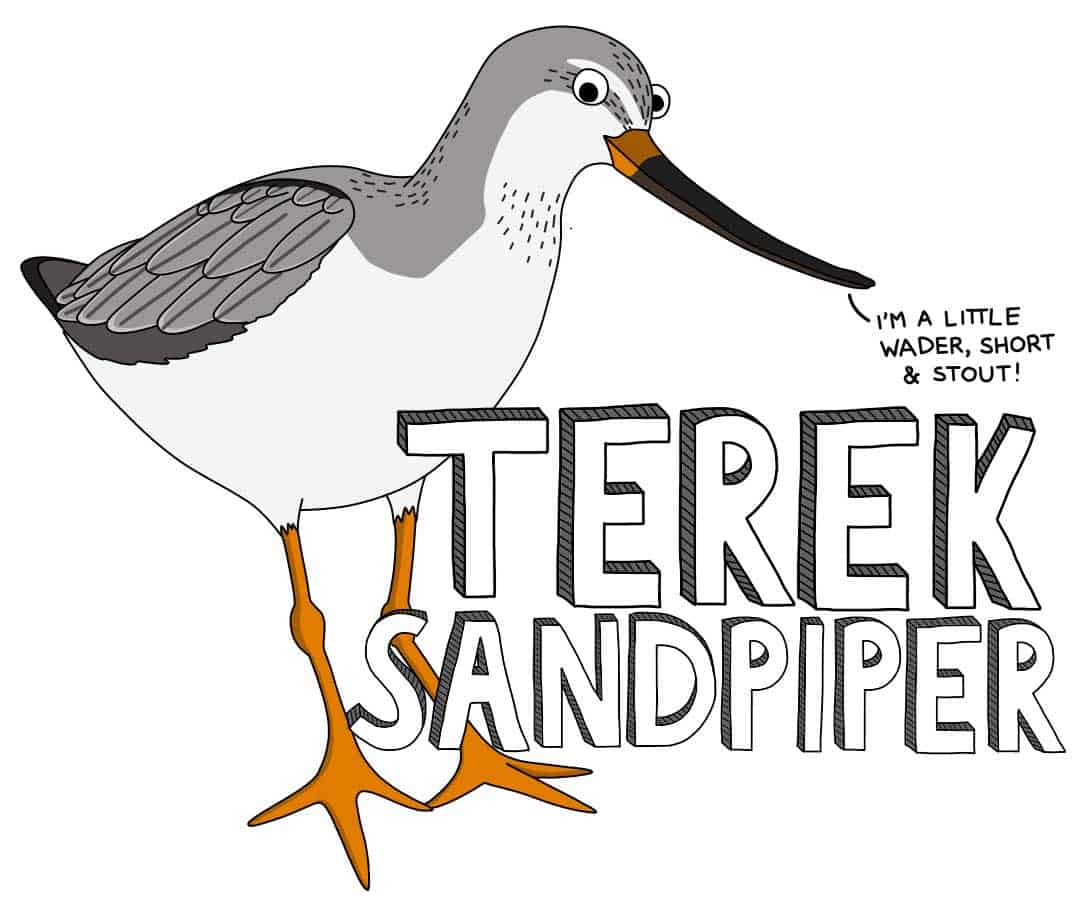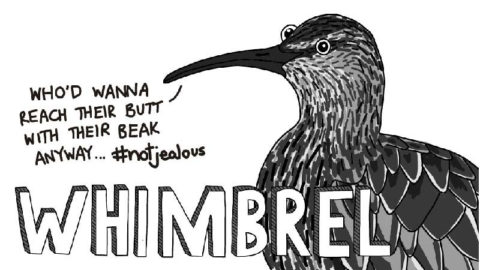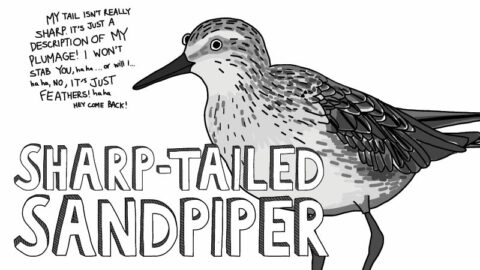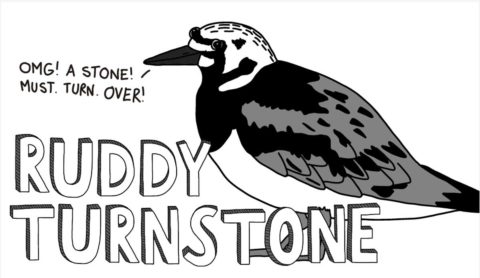The Terek Sandpiper, Xenus cinereus, is a small and stout wader with a steep forehead, short orange legs and an unmistakable upturned black bill with an orange base.
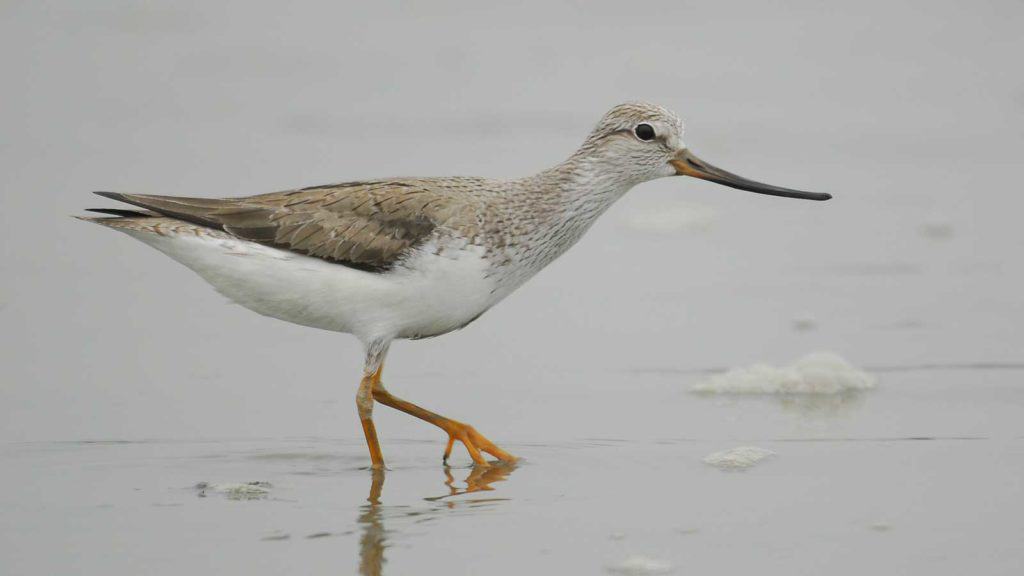
When in non-breeding plumage, they have a plain grey back and a white belly. Dark streaks appear on their head and neck when they moult into breeding plumage. A dark band of feathers also forms a line down the centre of the top of each wing when the bird is resting. This part of the wing is called the scapular.
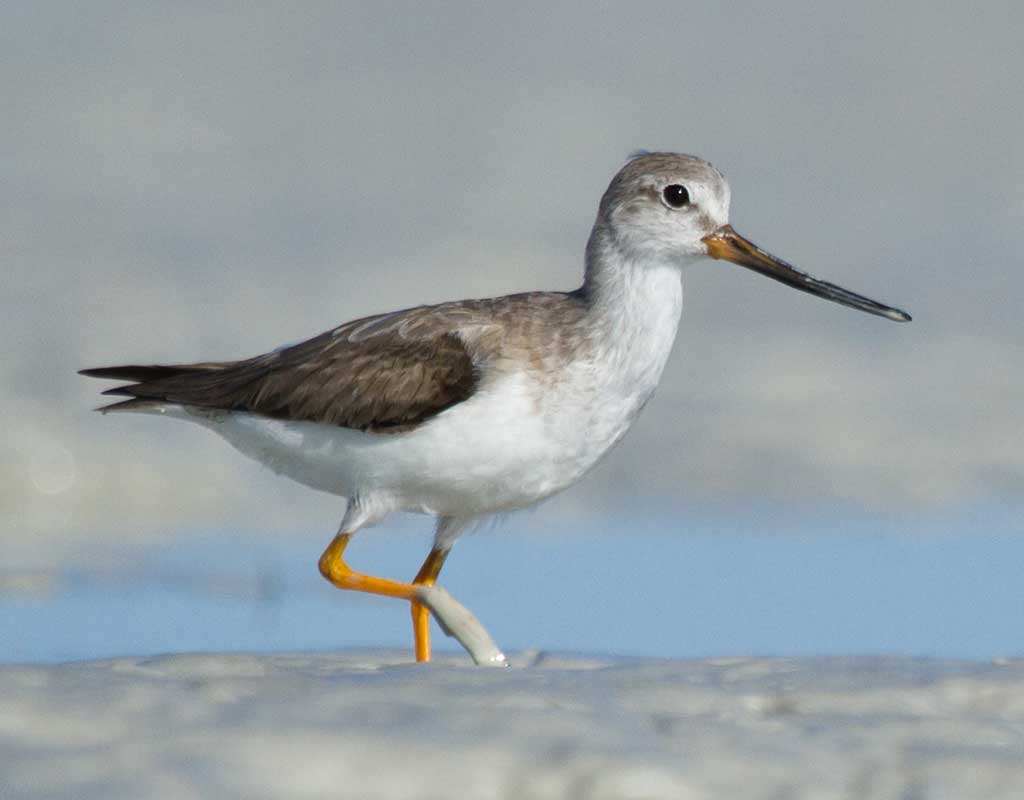
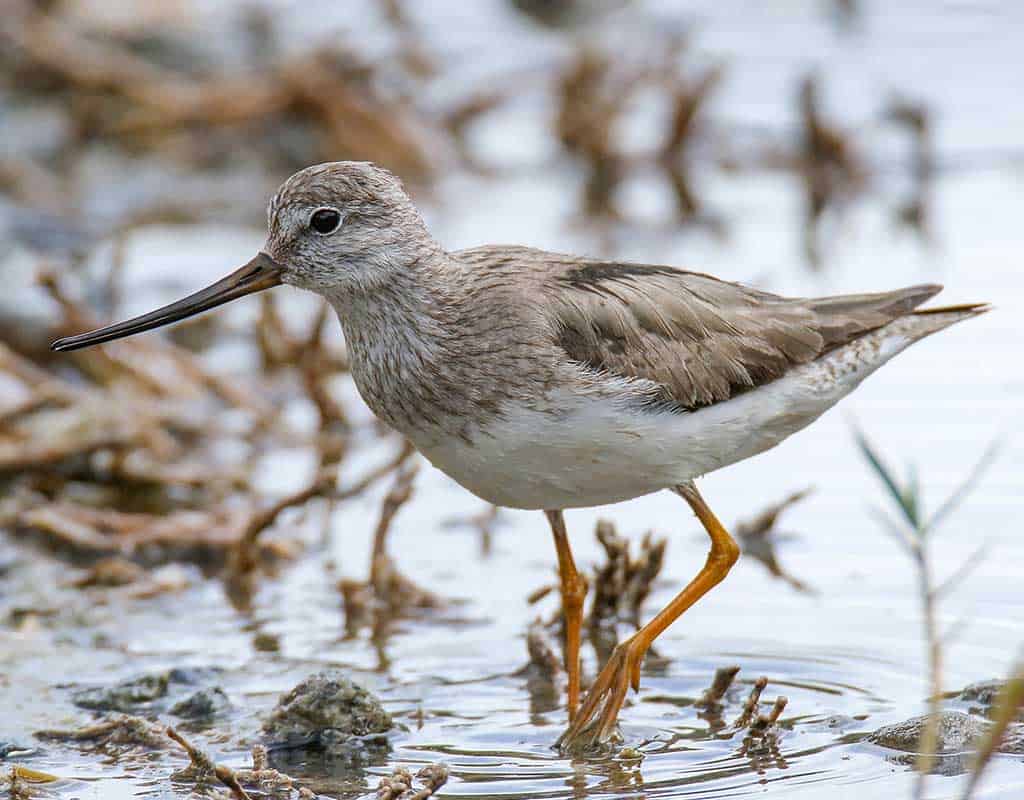
Terek Sandpipers aren’t big on sharing their food and usually like to hang out on their own. However, they will sometimes feed in small flocks or on the edge of flocks of other shorebird species.
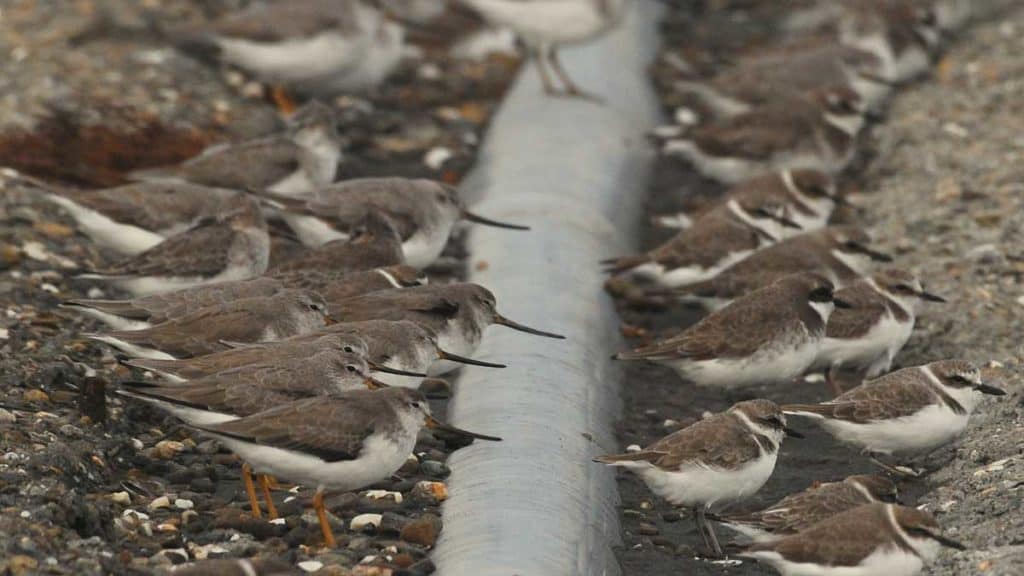
You can find Terek Sandpipers in mangroves, and on sandy and rocky beaches and sheltered mudflats mainly on the north and east coasts of Australia. They eat insects, crustaceans, molluscs, seeds and arachnids.
Don’t be fooled by their podgy stature. Terek Sandpipers are known for moving briskly and swiftly and suddenly changing directions as they chase after small crabs, which are their favourite prey!
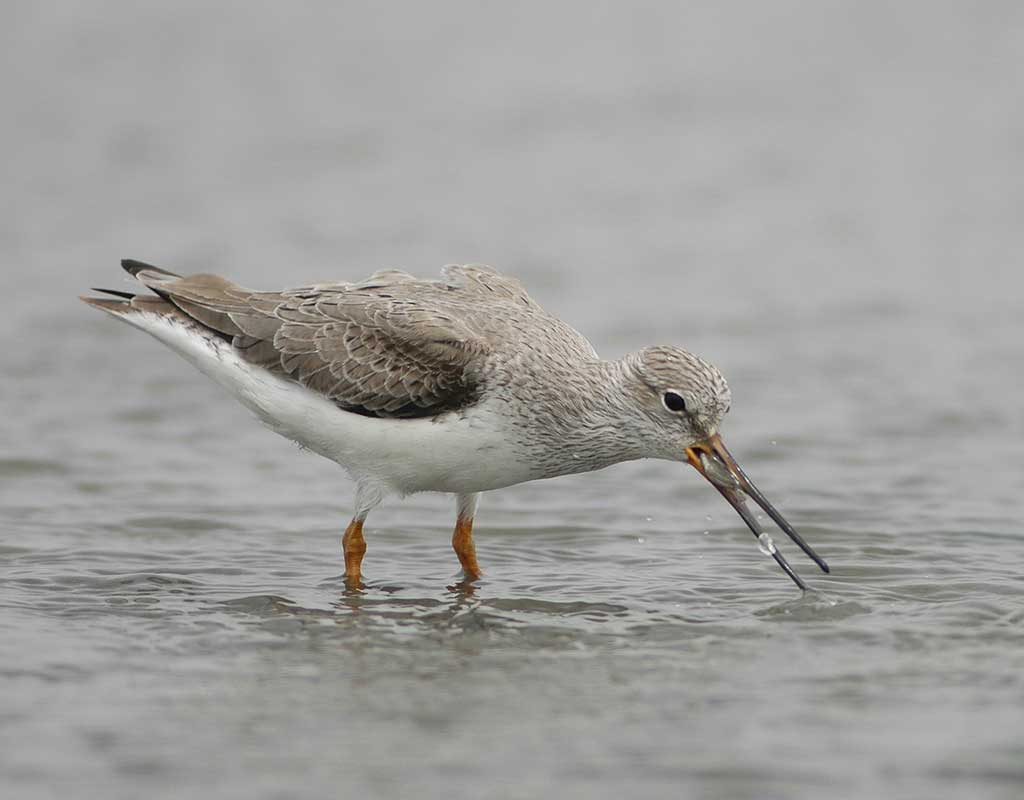
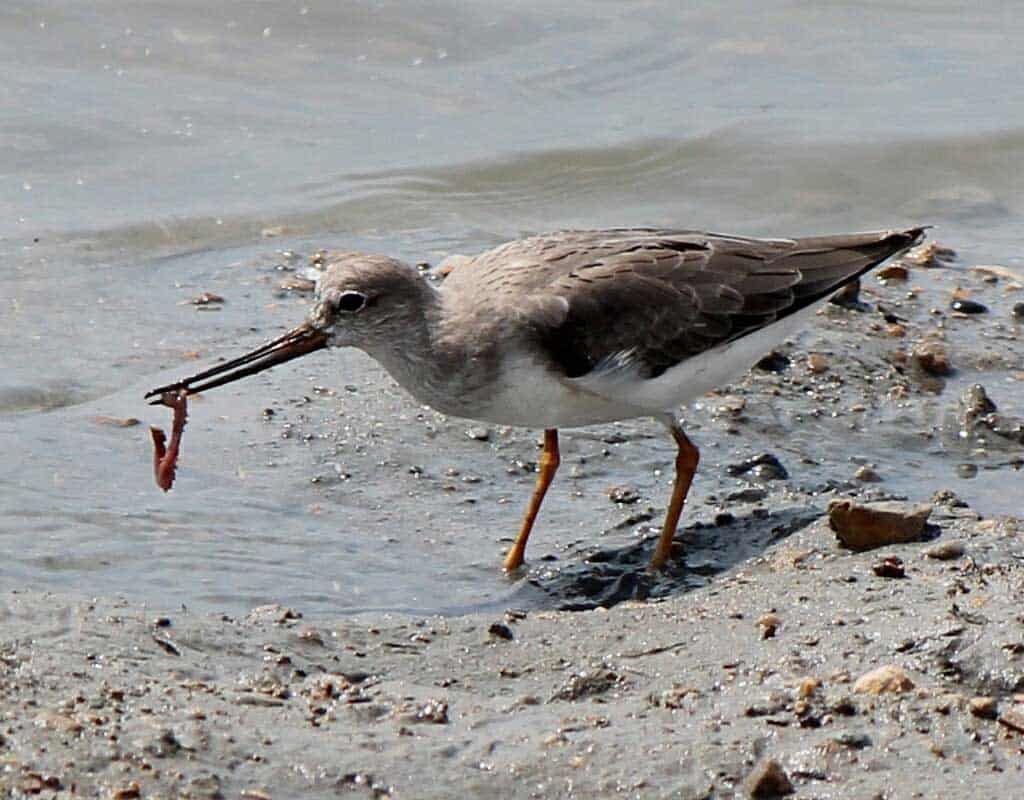
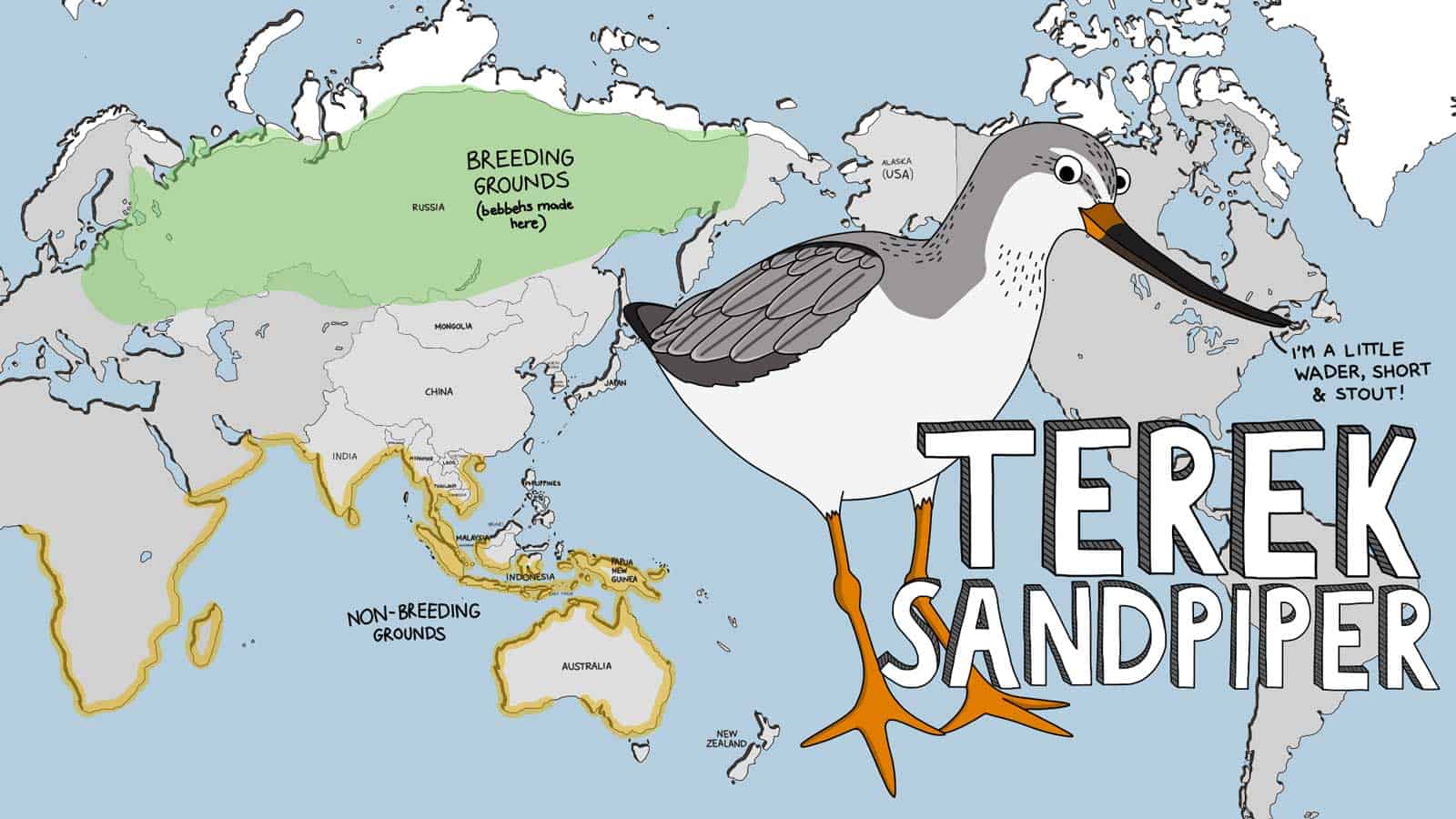
Terek Sandpipers breed in Finland, Russia, Siberia and the Arctic tundra from May to August. Male Terek Sandpipers put on alluring air displays and ground performances including singing, wing-fluttering and tail-raising to impress the females.
Once successful, they will build a shallow nest in low vegetation or out in the open and line it with grass. While the female incubates the eggs, the male will defend the nest. Then both parents will tend to the young once they have hatched.
